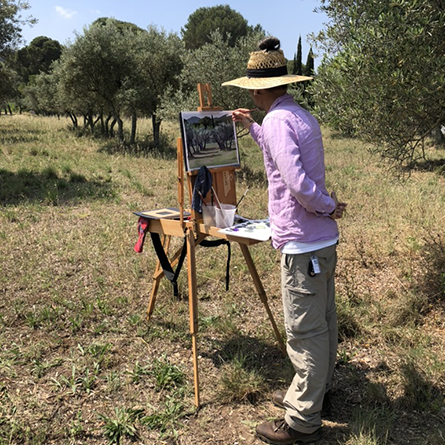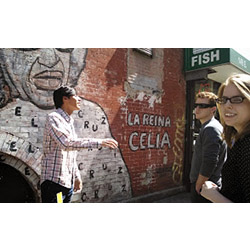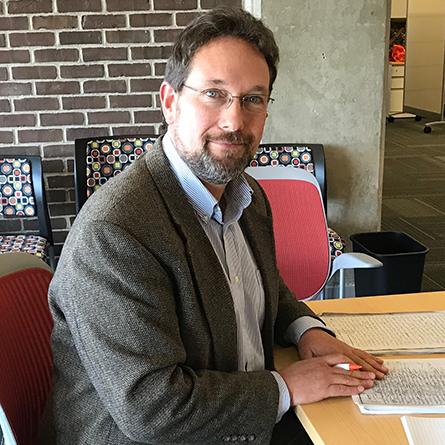
Trip to Spanish East Harlem teaches students about the power of community

Students studying race and ethnicity and revolutionary education in Latin America had learned a lot about the impact of gentrification and political power structures in cities. But it was talking to a young girl, a man in his 30s and an elderly gentleman in New York City’s Spanish East Harlem neighborhood that made it all real for Taryn Kitchen ’16.
“We had the opportunity to hear firsthand about their own neighborhood, about the struggles they face with gentrification, and about how they are trying to reclaim their space and identities,” Kitchen said. “It provided an opportunity for an engaging critical exploration of the conflict between the officials' intentions and the community's desires.”
Kitchen was one of 25 students in Education Professor Michael James’s “Revolutionary Education in Latin America” and History Professor Leo Garofalo’s “Theorizing Race and Ethnicity” classes to visit Spanish East Harlem at the end of the semester. The trip was sponsored by Connecticut College’s President's Fund for Faculty-Student Engagement.
On the trip, students explored the dynamic living relationship between the neighborhood, which has a large Puerto Rican community, and its public art. They visited El Museo del Barrio; attended a play, Carmen Rivera’s “La Gringa,” performed in Spanish at the Repertorio Español; and enjoyed the culinary offerings at neighborhood restaurants. They also walked through the neighborhood to see its murals, gardens, sculptures and community landmarks, and to chat informally with residents.
“The residents of Spanish East Harlem have worked very hard and very successfully to reclaim their community’s cultural and political space in the city, celebrating resident activist poets like Julia de Burgos and Young Lords leader Pedro Pietri and muralists like Manny Vega, and establishing institutions like the Museo del Barrio and an annual graffiti art festival,” said Garofalo.
The trip gave students an opportunity to connect what they had learned in the classroom with the lived experiences of the residents of Spanish East Harlem.
“The sense of community is particularly inspiring and refreshing,” said Kevin Zevallos ’16, who added that the experience helped him better understand “how communities can serve as powerful tools for support and representation of the voices of the individual families and people there and help them fight the growing problem of gentrification.”
June 16, 2014
